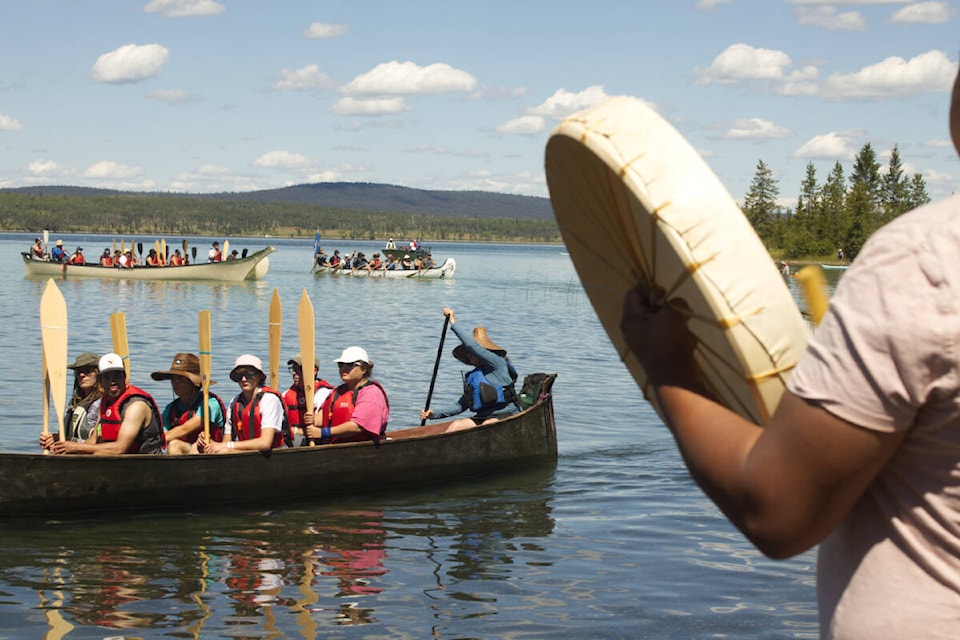By Kelly Sinoski
Every summer, the Secwépemc people would gather on Green Lake.
They would barter, trade, celebrate. The area was known as Teltsinten, or “where the news spreads.”
“When you step on the territory, you feel the heartbeat and power of ancestors,” says Helen Henderson, Kukpi7 (Chief) of the Tsq’escenemc (Canim Lake Band).
The Secwépemc were nomadic people, moving with the seasons. People from Tsq’escenemc (Canim Lake Band), High Bar, Clinton Whispering Pines, Canoe Creek and Bonaparte would meet there, along with other bands from the south and north.
At one time, there were 35 Secwépemc campfires. There are only 17 today, signifying the loss of nations through smallpox, migration or the merging of bands.
Lenora Fletcher, of the High Bar First Nation near Clinton, says Green Lake was one of the spots they managed in the old days. Clinton Whispering Pines, which had once been part of the High Bar Nation, still has a fishing station at 83 Mile where the creek drains into Green Lake.
“We would do a big gathering at Green Lake,” Fletcher says. “I would love the government to recognize the importance of that and give us a chunk of that back so that we can renew our practice of going there to gather. Right now we gather at places like Pear Lake and that just doesn’t compare.”
Stanley Daniels, a Tsq’escenemc councillor, says Green Lake is also a significant part of Tsq’escenemc’s rites and title claims. The Tsq’escenemc share management of the lake with Stswecem’c Xget’tem First Nation (Dog Creek-Canoe Creek), located 58 kilometres north of Clinton.
“It’s a part of our identity and part of our culture,” says Daniels.
“You can see the markers of our presence there, in the names along the lakes, like Little Arrowhead. It’s obviously an area that’s been occupied for a very long time.”
The Tsq’escenemc are investigating the disappearance of the Green Timbers Band, which had lived on the lake but went extinct during the smallpox epidemic, Daniels says.
He says it’s believed some members may have joined other bands such as Tsq’escenemc rather than dying out.
During a Pulling Together Canoe journey at Green Lake in July, Elder Elizabeth Pete said 14 Indigenous burial sites had been found at Green Lake.
She told a story of how a pilot’s wife used to have visions of a tall First Nations man walking around the grounds of her house. When the burial sites were discovered, the man’s bones had been among them.
In another instance, a 12-year-old, possibly a boy, was found in full regalia made out of copper.
“They had never seen anything like it in any of our burials,” Pete says.
She says the archeologists had begged the Elders to keep the remains a few weeks longer, but the Elders did not want to mess with the final resting place.
“When we’re visiting these places here, we’re retracing the footsteps of the places that were special in the hearts of our people and they would have been happy.”
kelly.sinoski@100milefreepress.net
Like us on Facebook and follow us on Twitter
